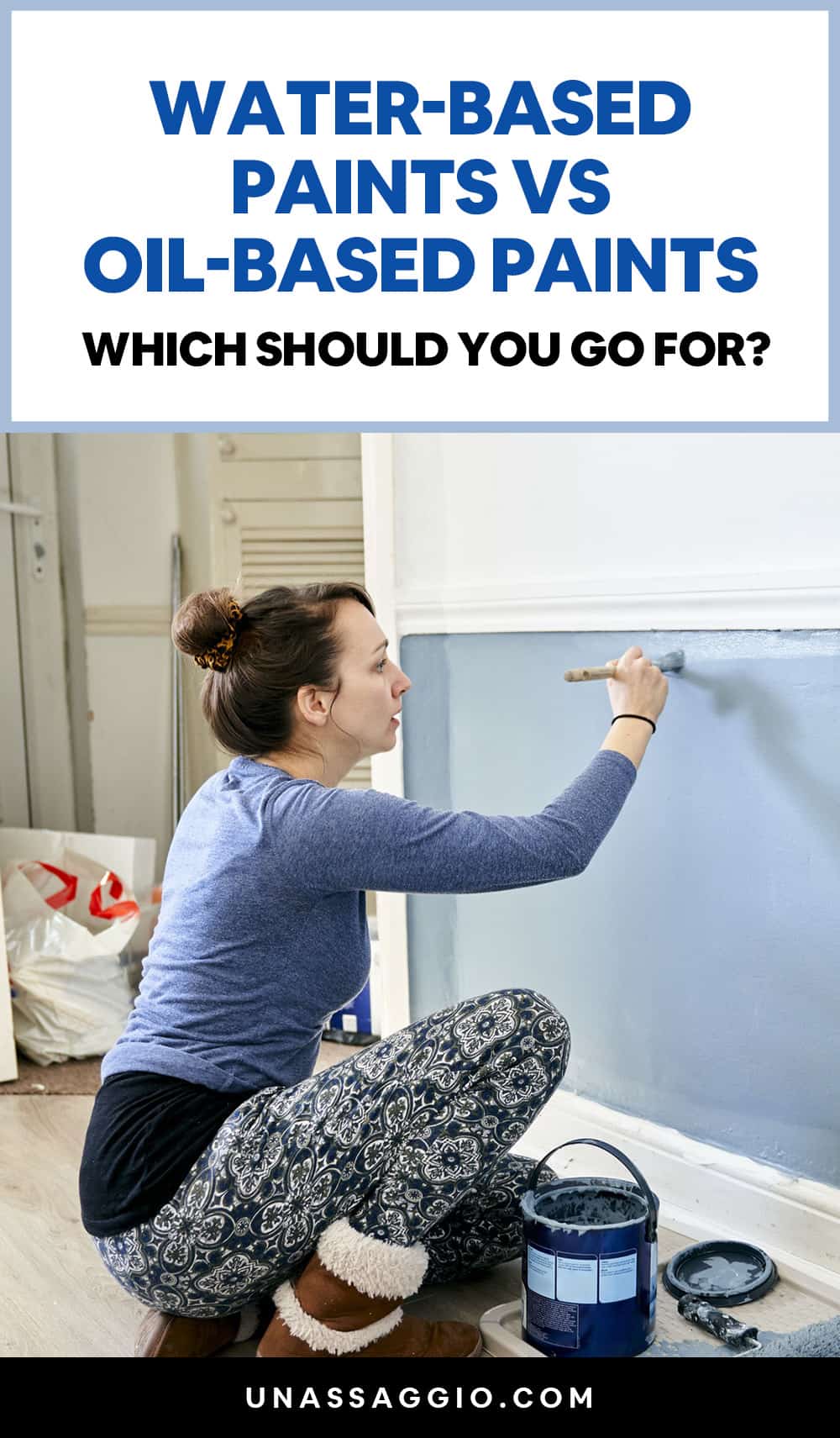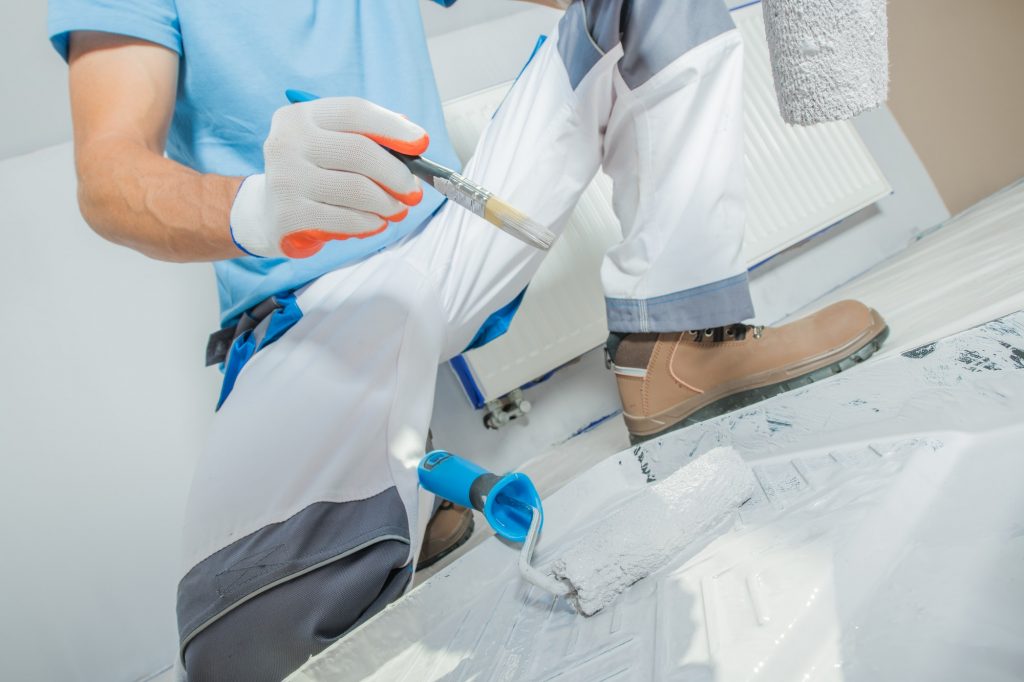Picking the type of paint to use for your home or the completion of your project is a very important task, you cannot afford to go wrong.
If you are new to the world of paint, you might assume that all you need do is pick a bright color and that ends it. this is not so. Picking the color of a room is secondary and what’s more important is picking the right type of paint to fit your project.
The type of paint you choose, will not just determine the color of your room, but also the mood of your room. It is important to know the different types of paint, their differences, the components that make up each paint and ask a lot of other questions about them before deciding on which to pick.
Does that seem like a lot of work? it sure is. This is why we thought it right to help you with all you need to know about water-based paint vs oil-based paint.
Table of Contents
Water-based paints explained
What is water-based paint? Like many other paints, water-based paint consists of pigment and binder, with water as the carrier. The water-based paint dries quickly and doesn’t have a harsh odor. It is also easy to clean up. Water-based paint comes in two types; latex paint and acrylic paint. They are both used to paint homes, structures, etc., however, they have different purposes.
The acrylic paint consists of more acrylic polymers than latex paint. Hence, it is more durable, resilient and of course, costs more. The acrylic paint can be used for kitchen cabinets, or outdoor furniture, etc.
The latex paint, on the other hand, consists of lesser acrylic polymers, it provides better coverage than the acrylic paint, is less expensive, and very eco-friendly.
Advantages of using water-based paints
- Odorless: the water-based paint has less odor when applies to surfaces and does not react with pollutants in the atmosphere. This allows fresh and breathable air.
- Durability: The water-based paint is very durable and excellent for exterior painting. It is flexible ad does not peel on time. you can be certain that your color will not fade or turn white. It stays for as long as you want it.
- Easy to apply: talk about ease, talk water-based paint, you can get an even and smooth surface at the end of your work. for best results, make use of synthetic brush, this is because traditional brushes can leave brush marks and may make the paint dry quickly unlike the synthetic brush, which allows the surface of the wall to absorb the moisture in the paint.
- Dries on time: You do not have to spend 2 days or the whole weekend on a surface. The water-based paint dries between 4 – 6 hours, allowing you to apply the second coat the same day.
- Easy to clean: With the water-based paint, you don’t pour different chemicals or spirits to get the paint off your skin, you can simply run your skin underwater and they’re off.
Disadvantages of using water-based paints
While there are many reasons you should consider water-based paint, there are also other reasons you should look at before you make your decision.
- It’s not exactly suitable to be used in moist environments. It can become difficult to use when the temperature is below 50 degrees Fahrenheit.
- Water-based paints do not lay flat and can show brush strokes if not properly applied. This means that you may require a professional to paint if you choose to use water-based paint.
- Water-based paint may not be suitable for a raw metal, glossy or shiny surface. It may not attach firmly.
Oil-based paints explained
Unlike water-based paints that make use of water as the base, the oil-based paints consist of natural oil i.e. linseed or synthetic( alkyd) oil as the base. The oil-based paint is the perfect choice for painting metal, this is because it sticks well to the surface and protects the metal fences.
Advantages of using oil-based paints
- The oil-based paint is very durable.
- Very easy to work with.
- You may not be required to coat a second time, because the application of the oil-based paint is always really smooth and provides great coverage.
- The oil-based paint is great for covering imperfections, dirt, damaged areas, etc.
- You can make use of oil-based paints in high traffic areas, like trims, children’s rooms, this is because they can be scrubbed clean, without peeling or washing off.
- Comes in many levels of sheen, so you have options on the level of gloss that you want.
The disadvantages of using oil-based paint
- The oil-based paint can be very hard to clean up after paint from either your skin or brushes and rollers. You may be required to make use of a solvent or paint thinner, to get them off.
- Unlike water-based paint, which takes a maximum of 6 hours to get dried, oil-based paint takes about 8 – 24 hours to get dried. This is if you are using linseed-based. However, if you are using the alkyd-based, it will take a maximum of 6 hours to get dried. And you might not be able to coat the second time on the same day.
- The oil-based paint contains high VOC (Volatile Organic Compound) levels; VOC are “chemicals that are used to aid the paint’s transfer from the can to the surface. They also preserve the paint in the can. After the paint has been applying, the VOC evaporates, enters the atmosphere, and causes smog and other air problems.
- The oil-based paint has a strong, unpleasant odor as a result of the VOC that is present in it. you will be required to put on a mask and ensure that the place you are painting is well ventilated.
- the oil-based paint is flammable, fades off easily, and vulnerable to peeling and cracks.
these and more are the advantages and disadvantages of water-based paint and oil-based paint. It is not just enough to know what they’re good for but to also know the risk you might be taking for using them. The following are some other questions that people have, concerning oil-based paints vs. water-based paint.

Can I use water-based paint over oil-based paint?
Water-based paint is good, it has lower VOC content, dries fast, and does not lose its color on time, however, you may not be able to use water-based paint over oil-based paint. Using water-based paint over oil-based paint can lead to peeling. This is due to the adherence of the water-based paint to a glossy surface. If you want to use a water-based paint for that place, then you may be required to remove as much gloss as there is, from the surface before you repaint.
Does oil-based paint last longer than water-based paint?
Water-based paint isn’t as durable as oil-based paint. although, the water-based paint does not take a longer time to dry, and can be easily cleaned after painting, unlike the oil-based paint. The oil-based paint still takes the lead when it comes to durability.
Which one is better for the exterior?
The water-based paint is better for exterior use. This is because the water-based paint is more resistant to UV rays, this allows it to retain its shine and color for a long period. The oil-based paint is not like that. It breaks when exposed to UV rays and peels off.
Which of the paint is good for wood?
If you are considering painting your wood, you may first need to understand the type of wood surface you want to paint and what you want to achieve. The truth is wood is adaptable and you can use either water-based or oil-based for it, as long as you coat it with primer before.
Wrapping it up
The world of paint is a huge one, you may need to read on and consult a professional to fully understand what you need. Whether you are painting with water-based paint or oil-based paint, you must make use of the right tool; brushes, rollers, etc.
The wrong tool can make a mess of your work and you may not get your desired result. However, with the right tools and a guide, you can look forward to a beautiful project when you are done. Happy painting!
Read next: What Goes With Brown? 17 Brown Color Combinations For Your Room







